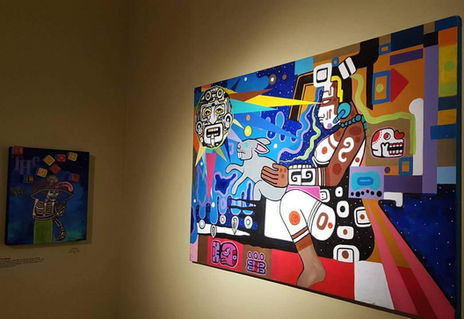Creating a Critical Pedagogy of Place with Marginalized Youth in Barrio Logan
Cultural Mestizaje
'our ability to adapt and survive under conditions of colonialism’ (McFarland, 2006, p. 940).
Within the stories and artworks of this practice are narratives and memories of cultural and political activism which create a sense of Barrio Logan as place and contribute to the practice as a form of cultural mestizaje. The paintings by German Corales, shown in figure 9, were exhibited at Liminal Gallery. Through conversations regarding the symbols and images, the oral tradition, as a cultural practice was honoured. The photo, figure 11, was shared by Chris, a student who participates in political and cultural activities at Chicano park. During a conversation with him, as a product of the place-based identity of Aztlán and as an example of site specificity of the murals, he explains:
“This mural is about the pollution and sickness that the junkyards have brought to Barrio Logan, lots of people got sick from poison from junkyards and the mural is a symbol of the protest against the junkyard companies, there used to be even more junkyards than now with old cars and other stuff” (Chris).
McFarland, P., 2006. Chicano rap roots: Black-Brown cultural exchange and the making of a genre. Callaloo, 3(29), 939–955.







